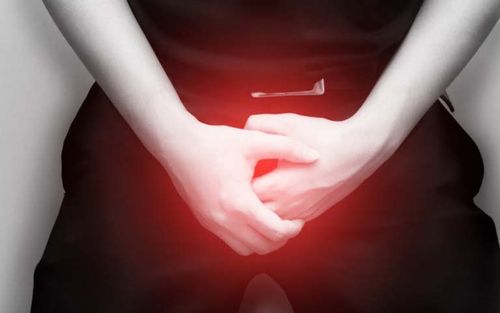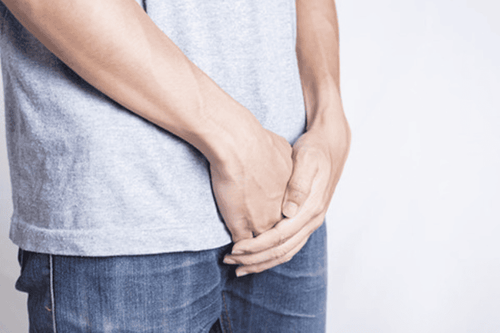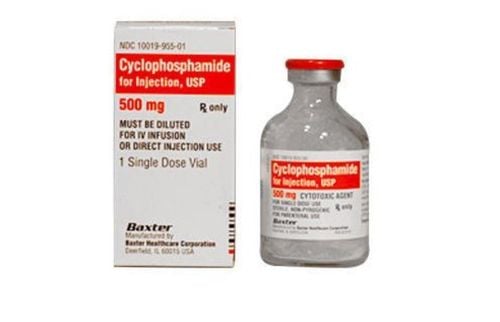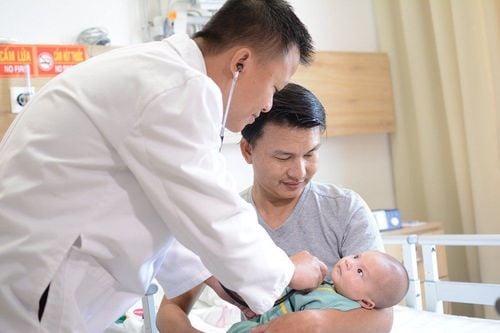This is an automatically translated article.
Mumps is a worldwide infectious disease caused by the mumps virus. The mumps virus is transmitted mainly through the respiratory tract. In previous articles, we have mentioned the clinical manifestations, treatment, infection prevention, as well as common complications when contracting the mumps virus. In this article, we will discuss in more detail about a "more frightening" complication of mumps, namely orchitis and epididymitis in adolescents and adult men.
1. Clinical manifestations of orchitis, epididymitis
Mumps orchitis usually occurs about one week after the onset of parotiditis in young men with MuV infection. The onset of orchitis is associated with clinical and physical symptoms such as headache and fever and subsequently manifests as testicular swelling and pain. Examination of the scrotum usually shows one or both testicles swelling, pain, heat, accompanied by hydrocele.
Epididymitis also occurs in most cases of orchitis due to mumps. A recent study demonstrated that mumps epididymitis most commonly occurs in the epididymis, in contrast to bacterial epididymitis, which usually occurs in the tail or body of the epididymis.
On ultrasonography of the testicles, the images of inflammatory lesions of the testicle and epididymis include low echogenicity, increased patency and increased volume of the testis and the epididymis may be associated. testicular effusion image.
During the acute phase (swollen, hot, red, painful testicles), the endocrine function of the testicles is altered, for example a decrease in testosterone levels. Some cases also show increased levels of pituitary hormone - the hormone that regulates endocrine activity and spermatogenesis of the testes LH and FSH. Acute symptoms may resolve within two weeks. However, sperm abnormalities, including sperm count, motility and morphology, which can persist for many years after recovery, suggest that abnormal spermatogenesis may be occurring.
After many years of observation in men who had had mumps after puberty, there were complications of orchitis, small testicle size, and tenderness. Under ultrasonography, testicular atrophy was evident characterized by elongated shape, low echogenicity, and reduced vascularity based on sonographic findings. Microscopic examination of testicular biopsies showed small atrophy of the spermatogenic epithelium, no spermatogenesis, and no spermatozoa.
SEE ALSO: Can testicular atrophy due to mumps give birth?
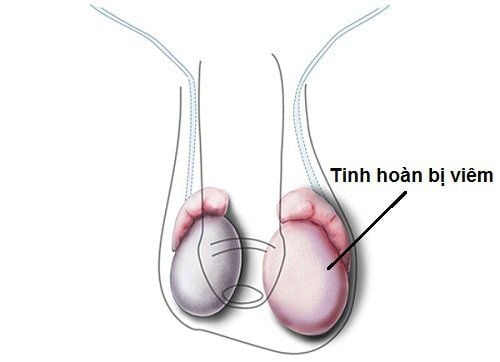
Hình ảnh mô phỏng tình trạng viêm tinh hoàn
2. Pathogenesis of testicular atrophy after mumps infection
Complications of MuV are not lethal, hence the lack of human samples to examine the pathogenesis. Current information on the pathogenesis of mumps is largely based on studies in animal models. Unfortunately, the mumps virus does not cause testicular inflammation in experimental animal models as it does in humans. It is possible that the hypothesis is related to the immune privilege in the testes. In the normal male body, the process of spermatogenesis in the testicles avoids the effects of the body's own immune system thanks to the "barrier" feature created by the protective cells in the testicles.
It is also due to this privilege that it is possible that the mumps virus, when it enters the testicles, easily multiplies, causing damage to spermatogenic cells, and at the same time, it is the replication of the virus that destroys the "barrier" of immunity. fluid in the testicles. The germ cells are both attacked by the mumps virus in the acute stage and attacked by the man's own immune system at a later stage.
SEE ALSO: How long does it take for orchitis after mumps to go away?
3. Approaches to diagnosis and treatment
Usually patients with mumps rarely go to the hospital, unless complications occur. Patients often go to the hospital when there is swelling and pain on one or both sides of the scrotum. Diagnosis is based on clinical manifestations along with immunoassays for antibodies against mumps virus IgG, IgM in serum and for mumps virus in saliva by RT-PCR technique. However, RT-PCR technique is also rarely indicated in clinical practice.
Treatment of orchitis due to mumps usually includes supportive measures for which there is no specific treatment guideline. Supportive treatment measures include bed rest, scrotal support, and analgesics and anti-inflammatory drugs for pain and fever. Physical and physical symptoms may disappear after active treatment in 4−10 days. Anti-inflammatory steroids have been used to reduce testicular pain and swelling, but it did not alter the clinical course and prevent subsequent testicular atrophy. Interferon has been used in a variety of cases to treat orchitis caused by mumps. However, this is a controversial method because there is conflicting evidence for its therapeutic efficacy.
It is worth mentioning here that the complications of orchitis in men after puberty when infected with the mumps virus are sometimes transient or underappreciated, as well as the patient's fear of going to the hospital, leading to serious consequences. "heavy" results later. The cells with endocrine function in the testes have the ability to recover after the acute phase of mumps, but the spermatogenic germ cells are permanently damaged and cannot be recovered. This leads to men not seeing physiological changes, so they do not go to the hospital to check their fertility. They only went to the hospital after a long time of expecting a child without any results. However, at this stage, it is impossible to help them have children of their own.

Nam giới gặp tình trạng viêm tinh hoàn cần được thăm khám và điều trị sớm
Advice for male patients with mumps after puberty is to check and monitor male reproductive health immediately after being infected to have timely treatment to avoid unfortunate consequences. happen later.
Thanks to the development in the field of assisted reproduction as well as the most modern storage system of Vinmec Tissue Bank, patients can choose to store sperm as a fertility insurance right after the period. acute stage of mumps to ensure fatherhood later.
If you need to provide more information and advice, customers can contact Mo Vinmec Bank, 458 Minh Khai, Hai Ba Trung, Hanoi.
Please dial HOTLINE for more information or register for an appointment HERE. Download MyVinmec app to make appointments faster and to manage your bookings easily.
References:
Han Wu, Fei Wang, Dongdong Tang, Daishu Han. Mumps Orchitis: Clinical Aspects and Mechanisms. Front Immunol. 2021 Mar 18;12:582946. doi: 10.3389/fimmu.2021.582946.




